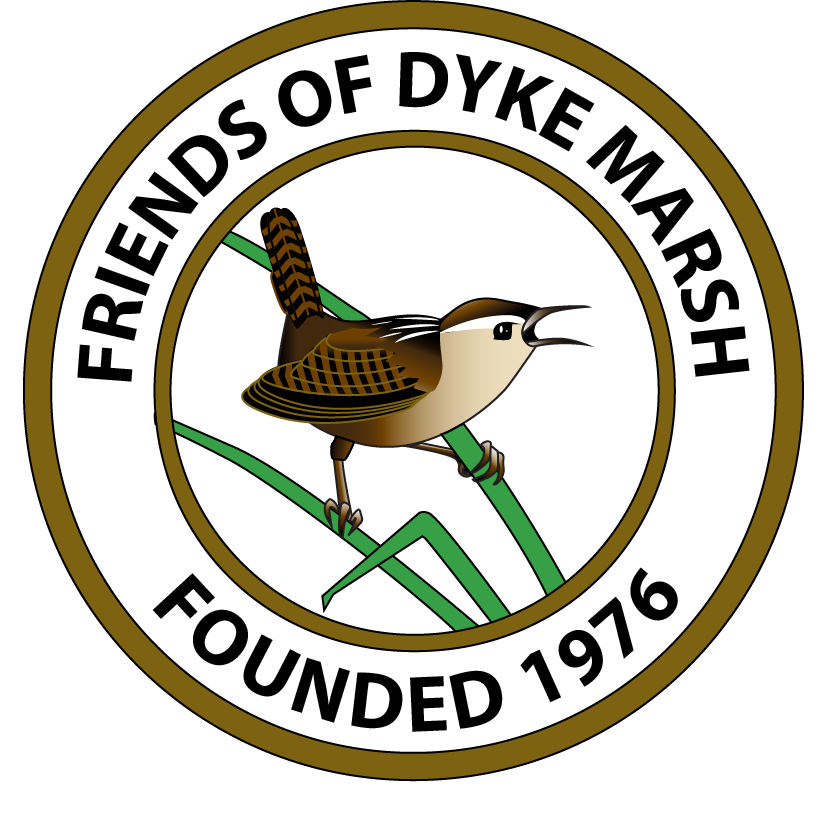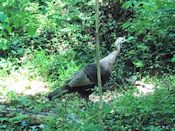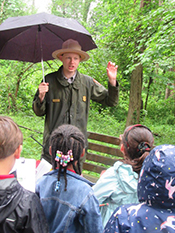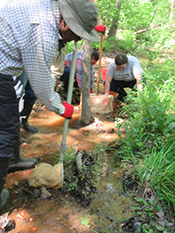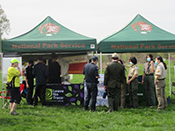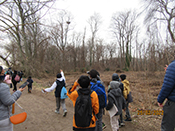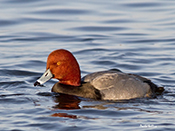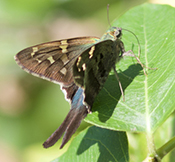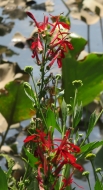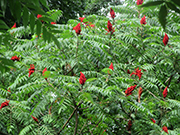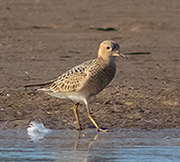A Wild Turkey in Dyke Marsh
In late May, several people observed a wild turkey (Meleagris gallopavo) on and near the Haul Road trail. Our FODM breeding bird survey leader Larry Cartwright reported on May 29, 2022, “A hen wild turkey strolled down the path near the Haul Road entrance. The turkey was icing on the cake.”
The next day, FODMer Ed Eder snapped a photo and speculated, “The well-fed turkey is probably consuming a lot of insects in the native planting area.” On May 30, 2022, Leila Saldanha took several photos of “our” turkey.
